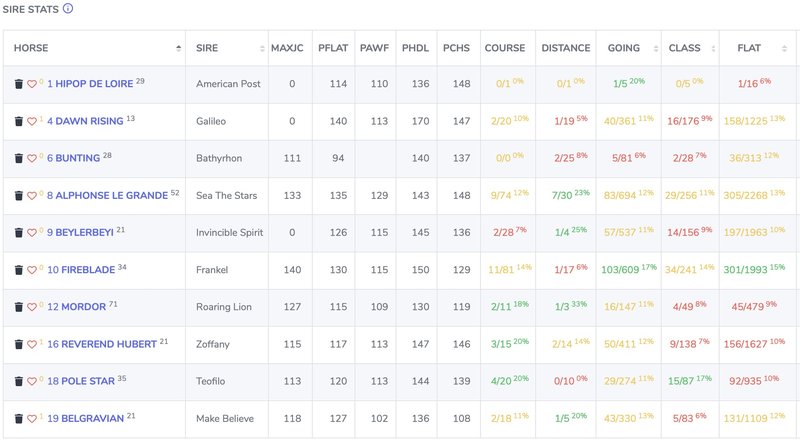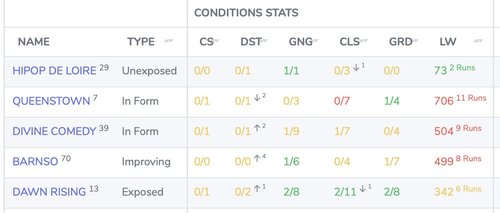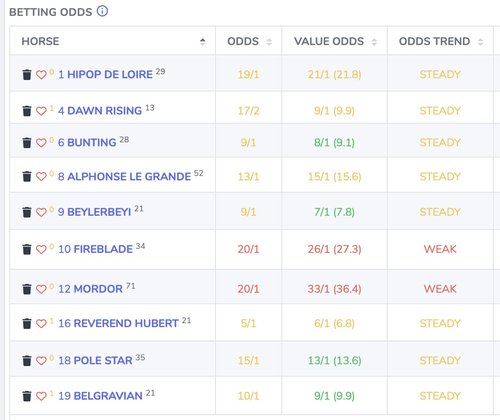Spotting Unexposed Horses with Winning Potential

- theturtle
- 11 Oct 2025
Spotting Unexposed Horses with Winning Potential
One of the most exciting challenges in horse racing is identifying unexposed horses – those who have yet to show their full ability and could still be the best horse in the race. While exposed runners tend to have clear, well-established profiles, the lightly-raced or improving types can offer the greatest betting opportunities. Here’s how to spot them, the factors worth weighing up, and how punters can take advantage.
What Do We Mean by “Unexposed”?
An unexposed horse is one with limited form in the book, meaning we don’t yet know its true ceiling of ability. Typically, these are:
- Lightly raced horses – often with fewer than 5–7 career runs.
- Improvers – horses stepping forward with each outing, often winning or finishing close despite inexperience.
- Horses changing circumstances – stepping up in trip, switching to a new surface, moving to a different yard, or being fitted with headgear for the first time.
Unlike fully exposed horses (who have run many times without suggesting major improvement), unexposed horses often have hidden potential waiting to be unlocked.
Key Factors to Identify Potential
1. Career Profile
Look for horses early in their career – particularly those who:
- Have only run a handful of times.
- Won or placed despite signs of greenness.
- Come from powerful yards known for patience and long-term planning.
2. Improvement Pattern
Check whether their recent form suggests progression:
- Improving Form or Speed figures with each run.
- Finishing strongly over inadequate trips (suggesting more to come at the right distance).
- Running more professionally with each start.
3. Pedigree and Trainer Intentions
Breeding clues are invaluable:
- Staying pedigrees trying short trips early can scream untapped stamina.
- Well-bred types often targeted at maidens or novices before blossoming in handicaps.
- Trainer patterns matter too – some are known for unleashing a horse’s true potential only once it has gained experience.
4. Handicap Mark
An unexposed horse making its handicap debut can be a prime betting angle. If the assessor has underestimated its ability, the horse can be “ahead of the handicapper” for a short window.
5. Race Conditions
A horse encountering a new scenario that suits it – such as softer ground, a longer distance, or a step up in class with untapped promise – can suddenly flourish.
Betting Angles and How to Capitalise
1. Handicap Debuts
One of the most profitable systems for many punters is backing horses making their first run in handicaps, especially if connections are shrewd.
2. Market Signals
If a lightly raced horse is well backed against more established rivals, it often signals stable confidence.
3. Ignore the Bare Form
Don’t dismiss a horse just because it hasn’t won yet. Many future stars get beaten in early maidens, only to improve dramatically once conditions suit.
4. Price Value
Because unexposed horses are harder to judge, the market can misprice them. That’s where betting value lies. A lightly raced improver at 8/1 may have far more upside than a fully exposed rival at 2/1.
Practical Example
Imagine a three-year-old colt running in a handicap over 1m2f after three starts in maidens at shorter trips. He stayed on strongly each time, his pedigree suggests stamina, and his trainer has a strong record with horses stepping up in trip. Despite finishing only 5th last time, the horse could be very well treated on his opening handicap mark. While punters may gravitate to the proven performers, the unexposed colt offers a strong betting opportunity.
Tipster’s Checklist – 5 Questions to Ask Before Backing an Unexposed Horse
- Has the horse had fewer than 7 runs? (Lightly raced = more chance of improvement)
- Is it showing progression in form or ratings? (Look for upward trends, not plateaus)
- Does the pedigree or trainer record suggest untapped potential?
- Is this the first run in a handicap, step up in trip, or change of conditions?
- Does the price offer value compared to exposed rivals?
Tools That Can Aid Form Study
BetTurtle has the information and tools you need to identify horses with the potential to improve.
1 Horse Types
BetTurtle classifies horses as Debutant, Unexposed, Improving, In Form, Exposed and Sleeper.
Debutant - A horse that is running for the first time.
Unexposed - A horse that has only raced a few times and is potentially open to considerable improvement, as it ages, gains experience or races under different conditions.
Improving - A horse that is improving and climbing the handicap ratings. Can be worth following until the improvement stops.
In Form - A horse that has been running well perhaps winning or coming close.
Exposed - A horse whose preferences are well understood. May win occasionally, but may struggle against unexposed or improving horses.
Sleeper - A horse that has not been running well, but has been dropping down the handicap ratings. Could return to form at big prices.
2 Historic Form Ratings
BetTurtle provides historic form and speed ratings. This information is summarised using graphs on the race card that allows punters to quickly spot horses with improving profiles.

3 Pedigree and Trainer Stats
BetTurtle provides comprehensive trainer and pedigree statistics.

4 Conditions Changes
BetTurtle makes it easy to spot horses changing distance, class or running in first time handicap races.


5 Odds Analysis
BetTurtle provides capabilities to allow punters to spot betting trends and determine whether odds represent value.

Next Steps
This article has shown how to spot horses with the potential to improve and win races.
Check out BetTurtle to access a range of features for free and additional subscription options here.




